

Damion Smy
China introduces “no fire, no explosion” EV battery standards
2 Hours Ago
The Jeep Grand Cherokee 4xe PHEV brings electrification to an off-road icon, but its push upmarket leaves it with an uphill battle to fight.
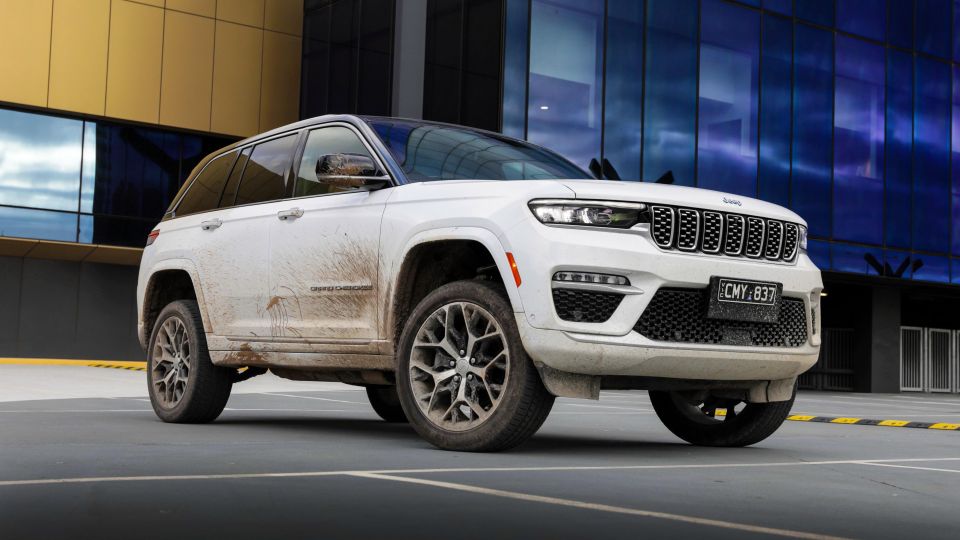
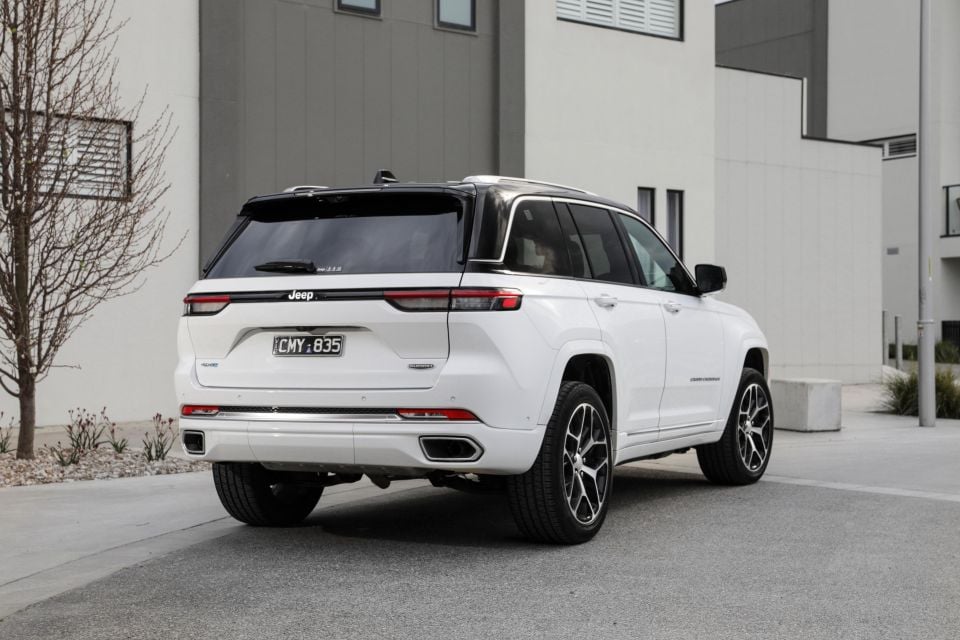

Quickly see how this car stacks up against its competition. Select any benchmark to see more details.
Where expert car reviews meet expert car buying – CarExpert gives you trusted advice, personalised service and real savings on your next new car.
The first Jeep Grand Cherokee plug-in hybrid (PHEV) sits at the top of the company’s range, and in a sense replaces both the diesel and the petrol V8 engines that are not available in this generation.

Available only in flagship Summit Reserve trim, it aligns more closely with Land Rovers and BMWs than with more mainstream fare, and thus continues Jeep’s steady climb upmarket.
Available only in the five-seat SWB body style, the 2024 Jeep Grand Cherokee Summit Reserve 4xe pairs a four-cylinder petrol engine with an electric motor and a battery offering enough EV range for short commutes.
Its points of difference are real off-road ability and heavier towing capability than most hybrids, and its undeniably classic Jeep design language.
Does it make sense as a future-forward luxury off-roader?
The Grand Cherokee Summit Reserve has a steep sticker price of $129,950 before on-road costs, which is equal to about $140,000 drive-away.
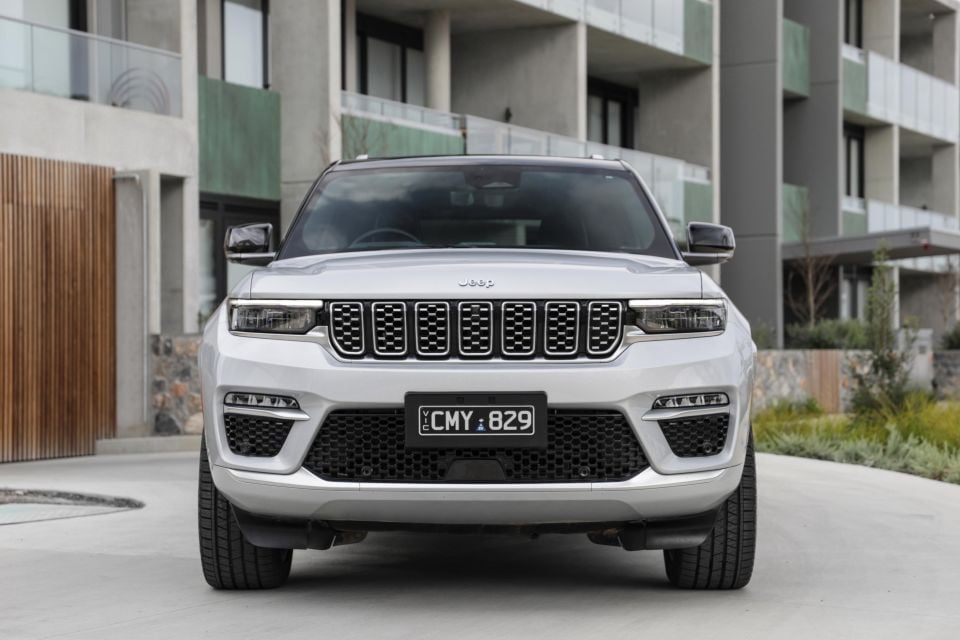
This is also around $30,000 more than the most luxurious non-PHEV Grand Cherokee five-seater, the Overland V6 petrol.
In terms of high-end PHEV competitors, it lines up alongside plug-in versions of the Volkswagen Touareg ($129,990), Volvo XC90 ($128,990) and Land Rover Defender ($126,275), and is around $20,000 cheaper at list price than a BMW X5 ($149,900) or Audi Q8 ($152,500) – all prices exclude on-road costs.
Perhaps of more interest, the Grand Cherokee Summit Reserve 4xe lines up squarely alongside a Toyota LandCruiser 300 Sahara ($135,500). That’s some serious competition.
2024 Jeep Grand Cherokee pricing:
Prices exclude on-road costs
Buy your new car without the stress. It's fast, simple and completely free.

Great service from Travis and team, second time I have used this business would not hesitate to recommend them to anyone
Craig C.
Purchased a Ford Ranger in Sunshine Coast, QLD
CarExpert helped Craig save thousands on his Ford Ranger, now let us save you on your next new car.
Find a dealIf the ‘Tupelo’ tan leather seats, lower dash and door trims don’t float your boat, fear not, because you can opt for black. It’s what this writer would be doing.
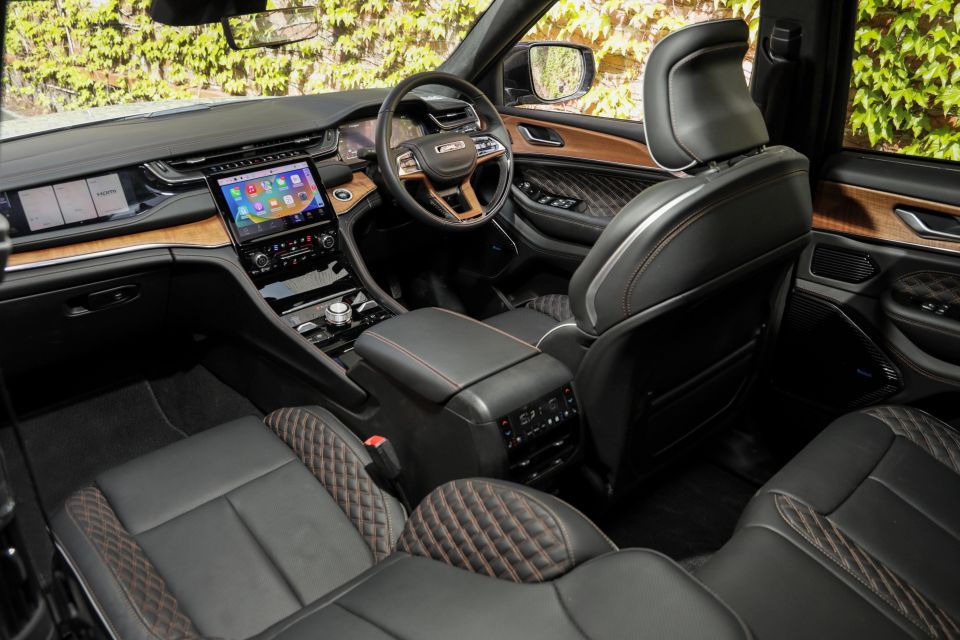
There’s no doubt Jeep has made great efforts to make this interior feel luxurious, with front seats that can give you a massage, and extensive use of stitched leather, suede in the headlining, and tasteful wood inserts to give a particular ambience.
Granted, some of the squeaky trims and cheap-feeling plastic on the wheel and along the transmission tunnel feel sub-par for a $140,000 vehicle.
The driver is presented with a large digital cluster with more trip information, vehicle data displays and multimedia menus than you can poke a stick at, and even night vision camera views as part of an options pack.
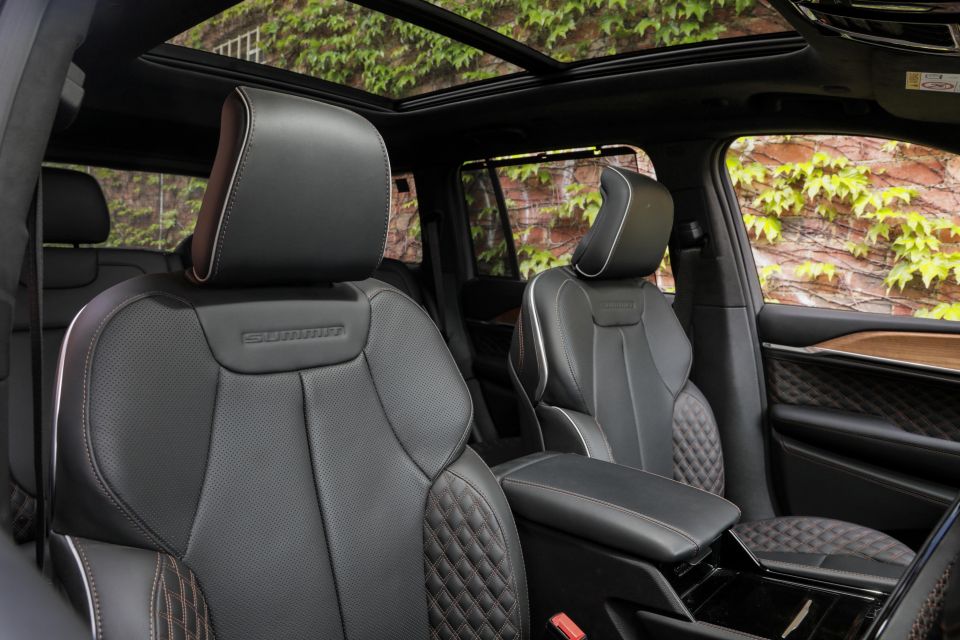

The centre touchscreen meanwhile offers native maps, wireless phone mirroring, and plenty of drive system and 4×4 infographics and animations. Plus the parking camera display is crisp enough, and the permanent menu toolbar makes it a simple system to operate.
The front passenger seat in our test vehicle also came with the optional second touchscreen which can display the vehicle camera views, map inputs and audio menus. Needless luxury? Perhaps.
Jeep has also retained plenty of buttons and dials to adjust the climate controls, and seat heaters and ventilators, and has welcome physical buttons for various drive systems and adaptive safety features such as lane- and park-assists.

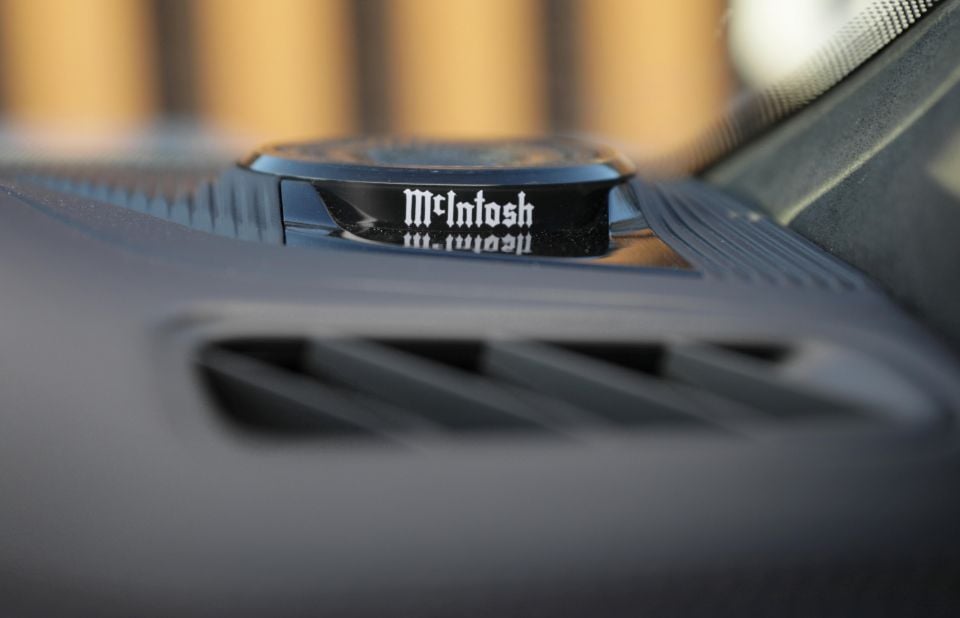
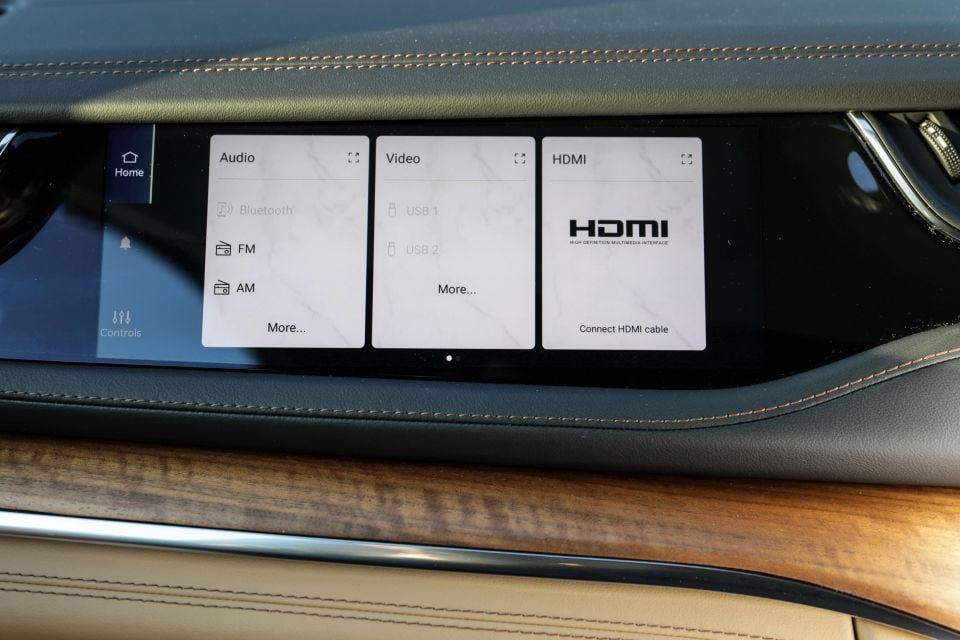
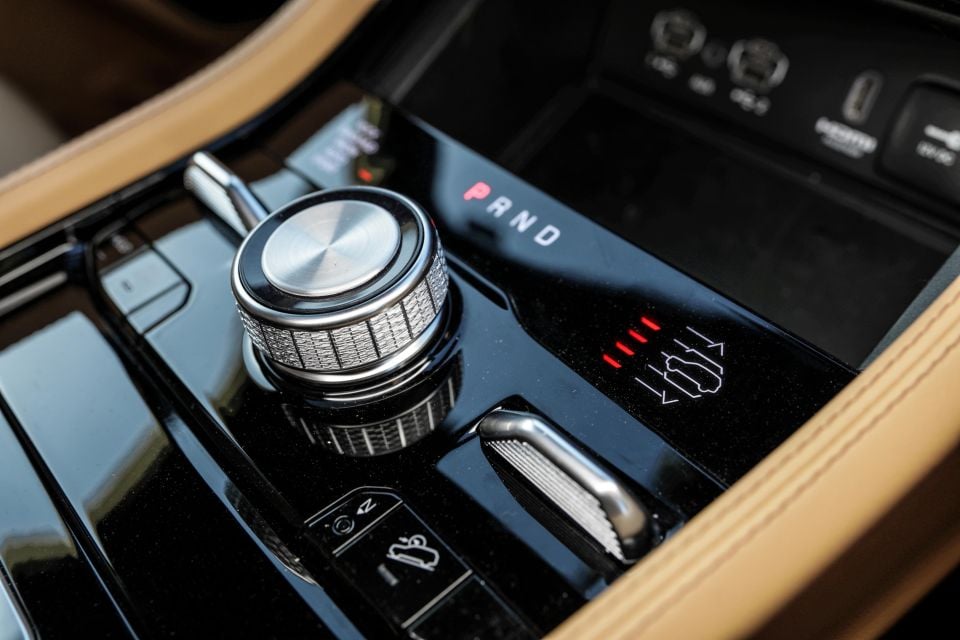
Below this are USB-C and USB-A ports and an HDMI input, plus a neatly installed trailer braking controller dial.
Along the tunnel you’ll find a chunky rotary dial gear shifter, and rocker switches for the air suspension adjustment and off-road terrain modes.
The back seats have plenty of headroom and knee room for adults, and amenities include a panoramic sunroof, window shades, USB-C and A ports, rear vents with climate controls, and even heated and cooled outboard seat bases.
However there’s quite limited toe room under the front seats, which takes the edge off comfort levels.
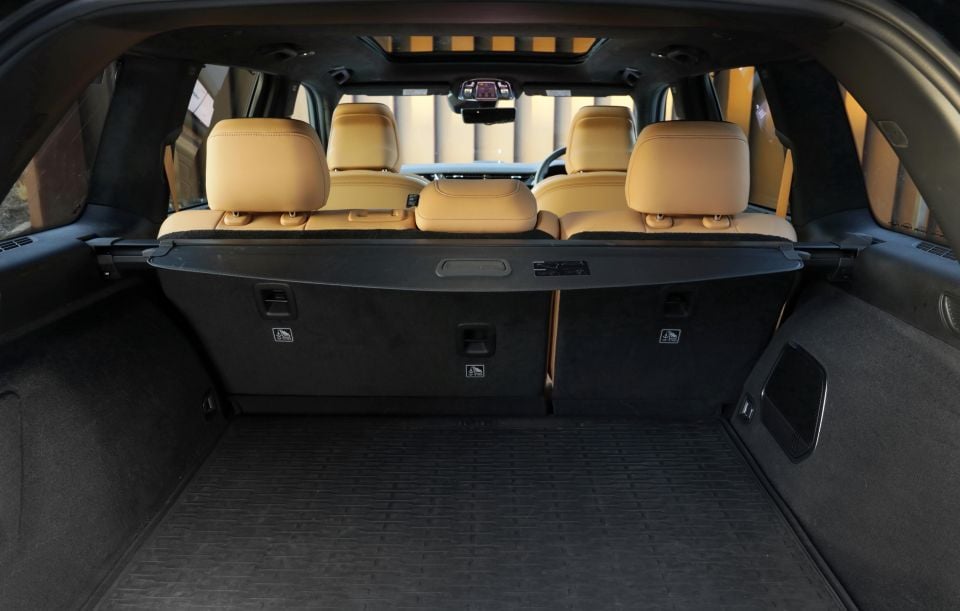

The cargo area in the 4xe is rated the same as the V6, able to handle a claimed 1067L behind the second row seats and 2004L with the back seats folded down. There’s a steel spare wheel fitted.
The PHEV drivetrain pairs a 2.0-litre turbocharged petrol engine (200kW/400Nm) with an electric motor, offering maximum outputs of 280kW and a beefy 637Nm of torque – albeit at 3000rpm, unlike a diesel which offers peak pulling power lower down in its rev band.
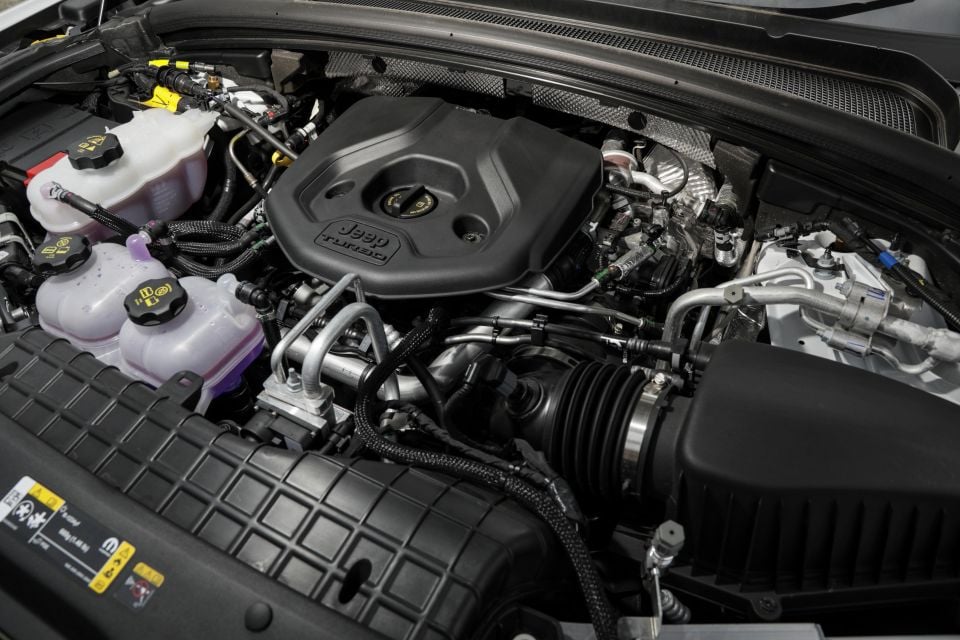
This makes it the gutsiest drivetrain available in the Grand Cherokee now that there’s no more diesel available and no petrol V8; though, it also weighs 369kg more than the regular Grand Cherokee V6. Expect a 0-100km/h time of between seven and eight seconds.
The drivetrain is paired to an eight-speed automatic and full-time active 4WD with a low-range, and has a 72-litre fuel tank, meaning range anxiety ceases to be a factor (expect 700 to 800km of driving, at least).
The e-motor is powered by a 400V and 17kWh lithium-ion battery offering a claimed 52km electric-only driving range, able to be charged in a few hours on an AC household wallbox, or overnight with the supplied three-prong cable. It powers the AC compressor and is sealed off for off-road applications.
As is typical with these things, the EV range claim is based on a lab test that assumes very careful driving. In reality you should expect 40-45km of EV-only mileage, based on our experience and reflected in stricter North American EPA fuel testing.
This assumes you’ve locked the vehicle into its EV mode, since in its default hybrid setting its electronic brain stretches out the battery range by augmenting it with petrol power at efficient periods.
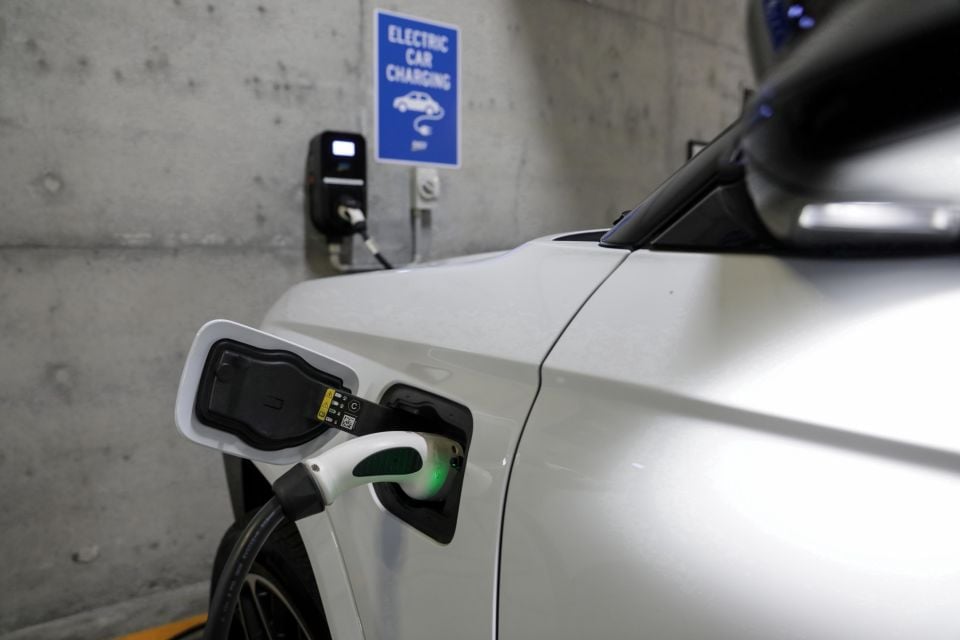
Like other PHEVs, the Grand Cherokee 4xe runs somewhat like a regular hybrid when the battery range is at zero, because it uses regenerative braking to keep a small amount in reserve, captured from all four wheels.
Jeep claims combined cycle fuel economy of 3.2L/100km, but like all PHEVs the real-world fuel use will vary widely. On a long trip, after the battery range reaches zero and the 4xe reverts to a mild hybrid, expect efficiency of 9.0-10L/100km, on a 80-100km trip after a charge you may see 6.0-7.0L/100km.
Like all PHEVs, the Jeep only makes sense if it’s regularly kept charged.
Unlike the majority of PHEVs, the Grand Cherokee 4xe keeps most of the expected Jeep towing abilities, being rated to tow a braked trailer of up to 2722kg.
However, given the GWM is 3110kg (meaning a payload of about 580kg) and the GCM is 5442kg, you won’t be able to tow the full mass with a load on board the vehicle at the same time.
Refinement levels are good, with the electric motor doing most of the work so long as there’s charge available in the default driving mode. The petrol engine then quietly and smoothly (most of the time) engages at higher speeds or under heavier acceleration.
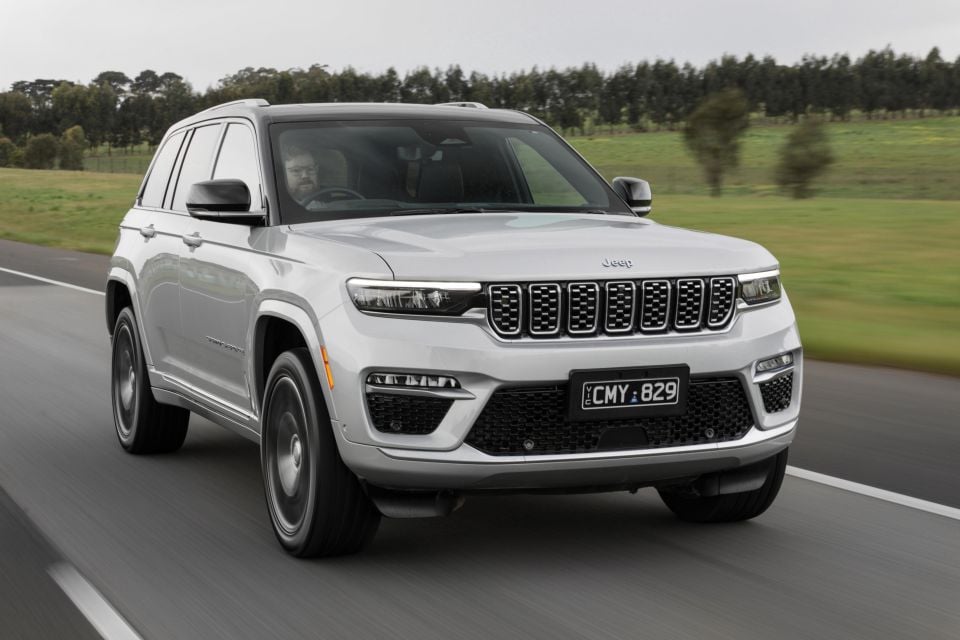
If you use the 4xe system as intended, you’ll charge it every night at home and thereby commute using mostly electric power.
Driven this way you’re seldom unaware of the Grand Cherokee 4xe’s kerb weight, which exceeds 2.5 tonnes; though, the two powertrains combine to offer sufficient punch for the task. It felt more effortless and less thrashy than the naturally aspirated V6 when it came to rolling response, for certain.
You can lock the vehicle into an EV mode via a button near your right knee, which prioritizes battery reserves almost all the time up to highway speeds.
To get a better idea of the real expected fuel economy, consider our test vehicle’s lifetime fuel efficiency return, which included regular charging but also regular hard driving at the hands of other motoring journalists.
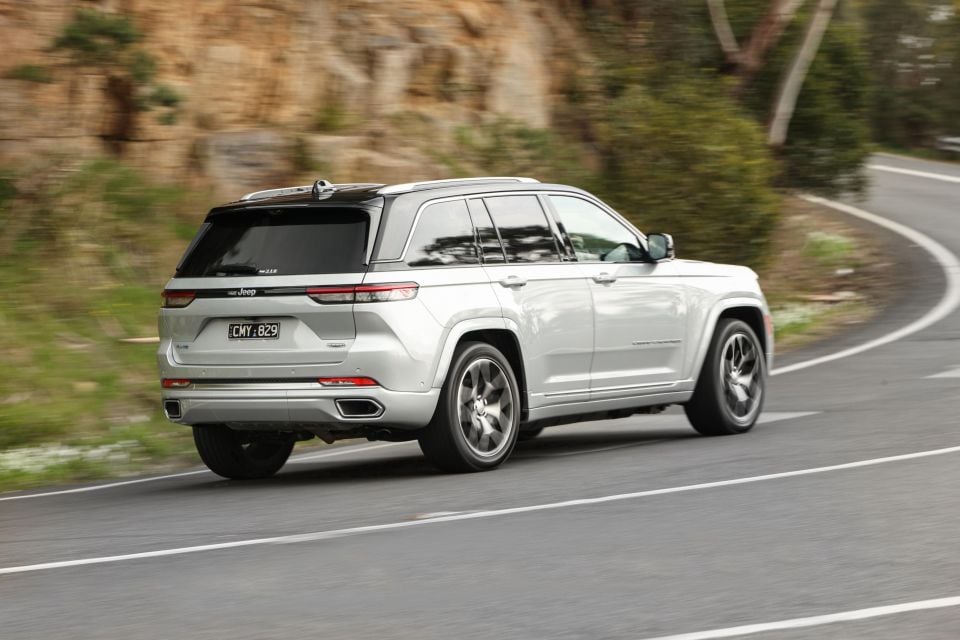
Over a total of 1744.6km, the Grand Cherokee did 767.4km of tailpipe-emission-free electric commuting (including those times when it was running at low speeds off regenerative braking) and 977.2km, averaging fuel efficiency of 8.9L/100km.
While the massive 21-inch wheels on low-profile Continental tyres look awesome, they do make it hard to tune a smooth ride quality, particularly over short and sharp road imperfections.
But credit where it’s due, the Jeep’s height-adjustable air suspension with rear self-levelling does a bang-up job. It’s decent to drive for something this big and heavy, with well-tuned steering, handling and braking. It’s a pretty serene tourer.
The Grand Cherokee 4xe also runs the company’s Quadra-Trac II active full-time 4×4 system with wheel-specific torque distribution, terrain modes that disengage the ESC and dull the throttle response for rocks, sand or snow, and a low-range gear engaged by a button on the centre tunnel.
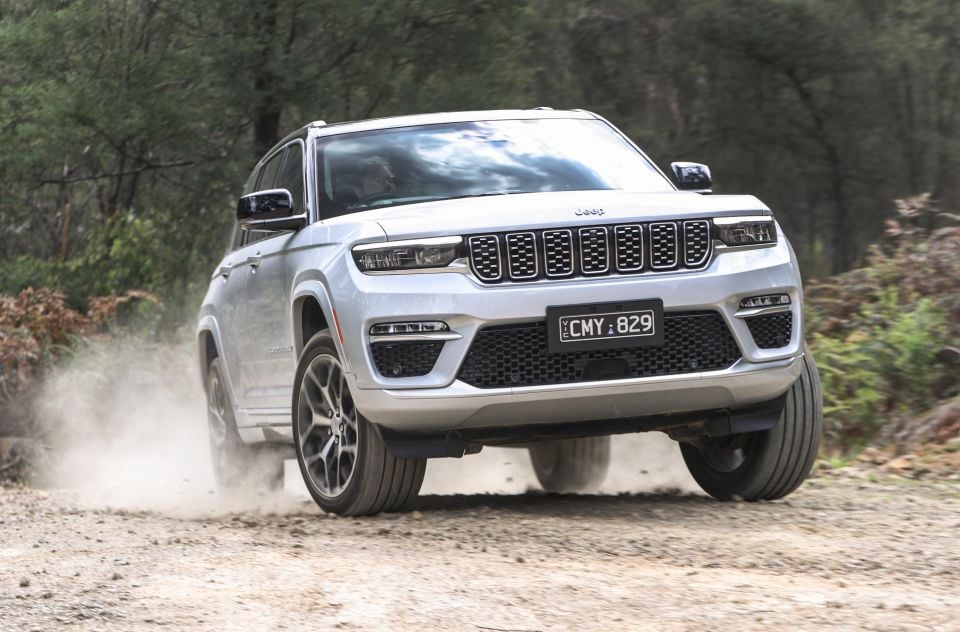
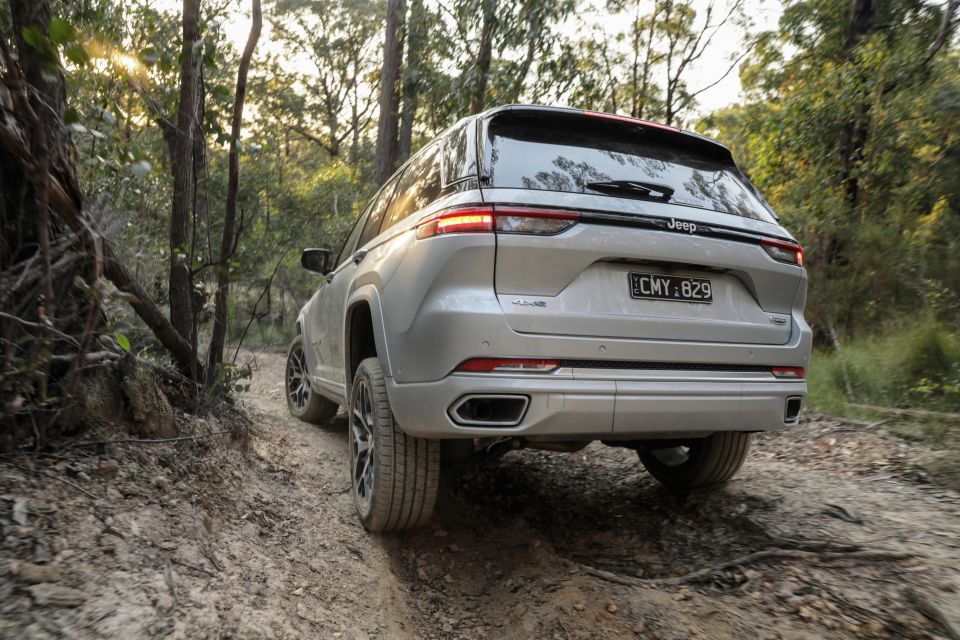
This feature, plus the adjustable suspension with up to 276mm of clearance, should get you out of sticky situations – certainly beyond what the tyres are capable of…
There’s also the intriguing possibility of electrified off-roading. If you put the 4xe into Save mode, it relies on petrol power more heavily for your road trip and keeps the battery charge maintained for your destination.
The battery has its own heating and cooling circuit and is protected by watertight casing up to a wading depth of 610mm, Jeep claims. This is certainly a novel selling point, as is the better-than-average PHEV tow rating.
One thing it does lack is the tractability of a high-displacement diesel, with its peak torque arriving higher in the rev band. It doesn’t feel like a four-cylinder petrol, but it also doesn’t entirely replace the benefits of an oil-burner.
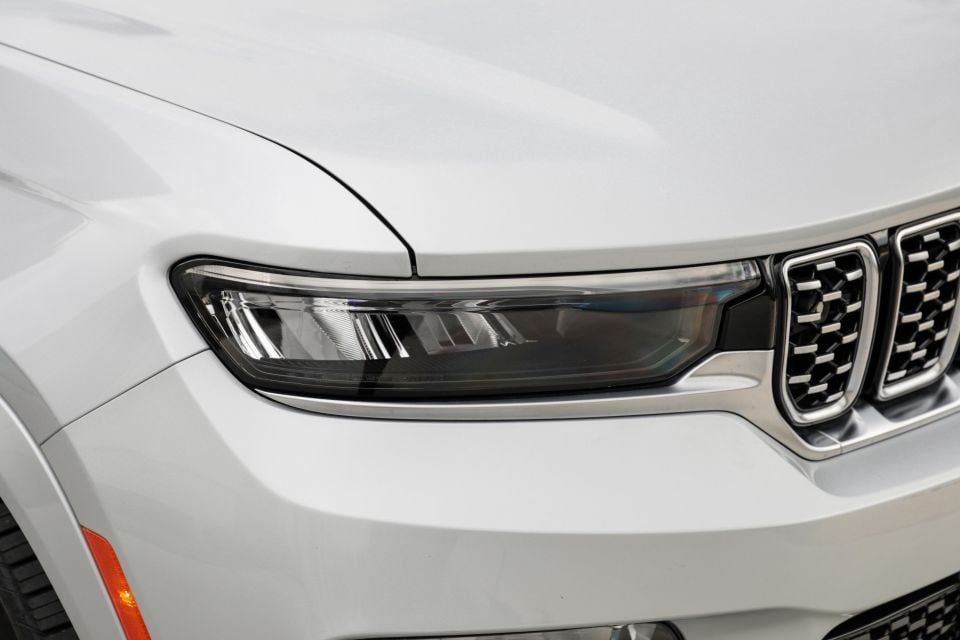
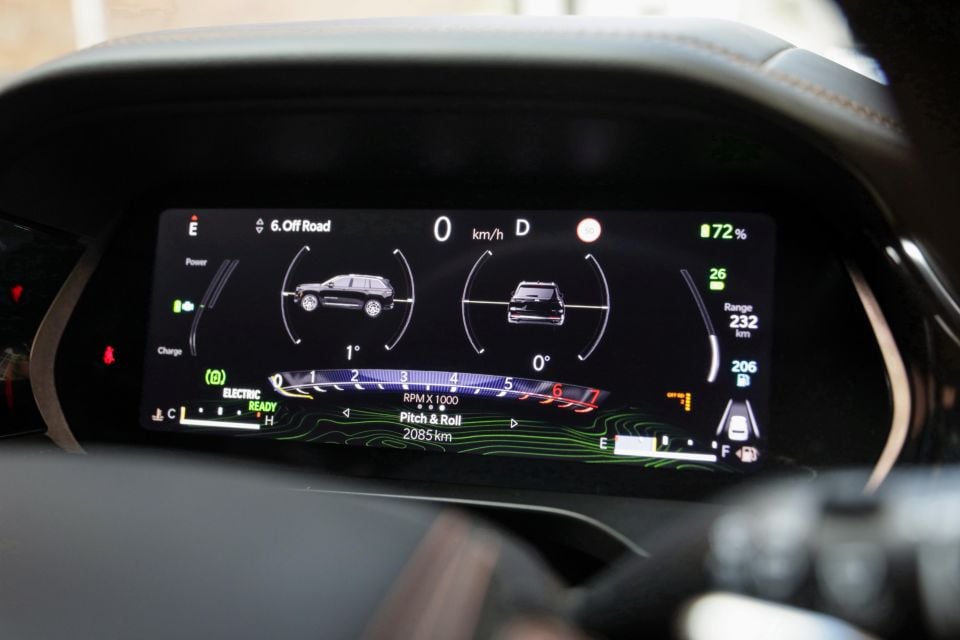
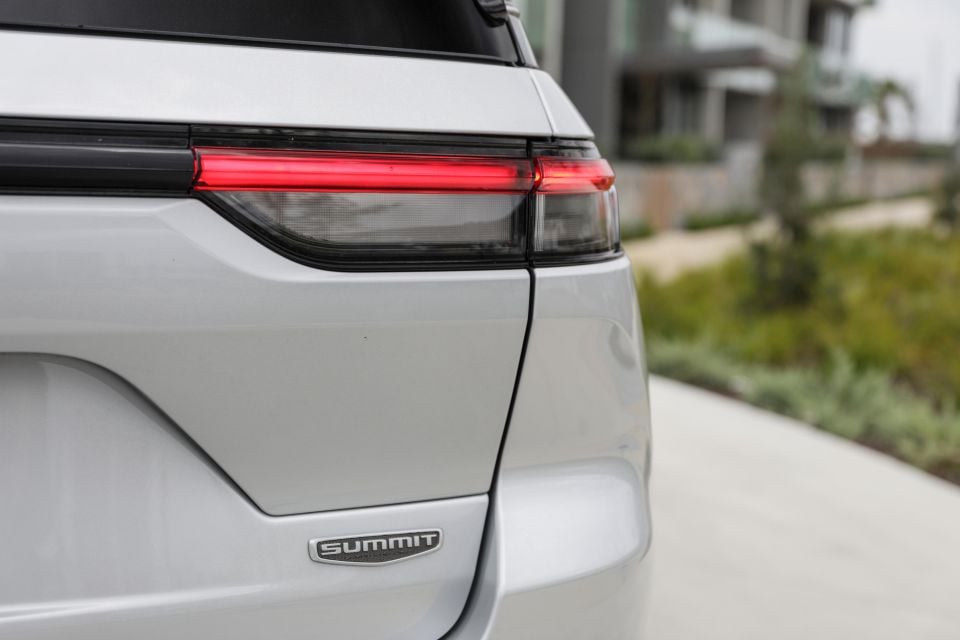

Standard equipment includes:
An Advanced Technology Group options package adds a head-up display with nifty night vision view, a front passenger touchscreen, and a wireless phone charger for $5500.
This really should be standard at the Summit Reserve 4xe’s price.
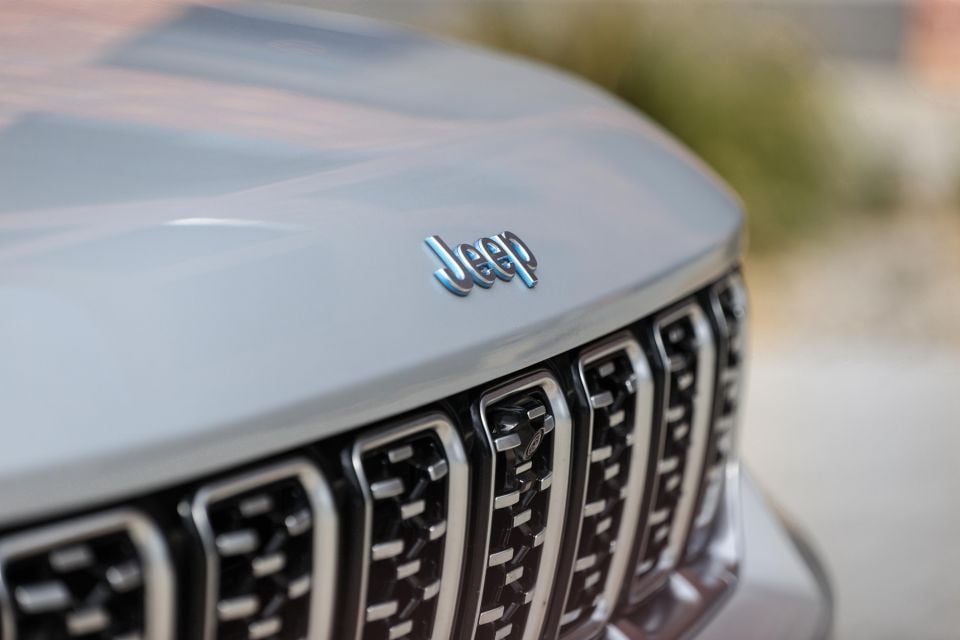
Where expert car reviews meet expert car buying – CarExpert gives you trusted advice, personalised service and real savings on your next new car.
Available colours include:
ANCAP awarded the Grand Cherokee 4xe a maximum five-star safety rating in 2022.
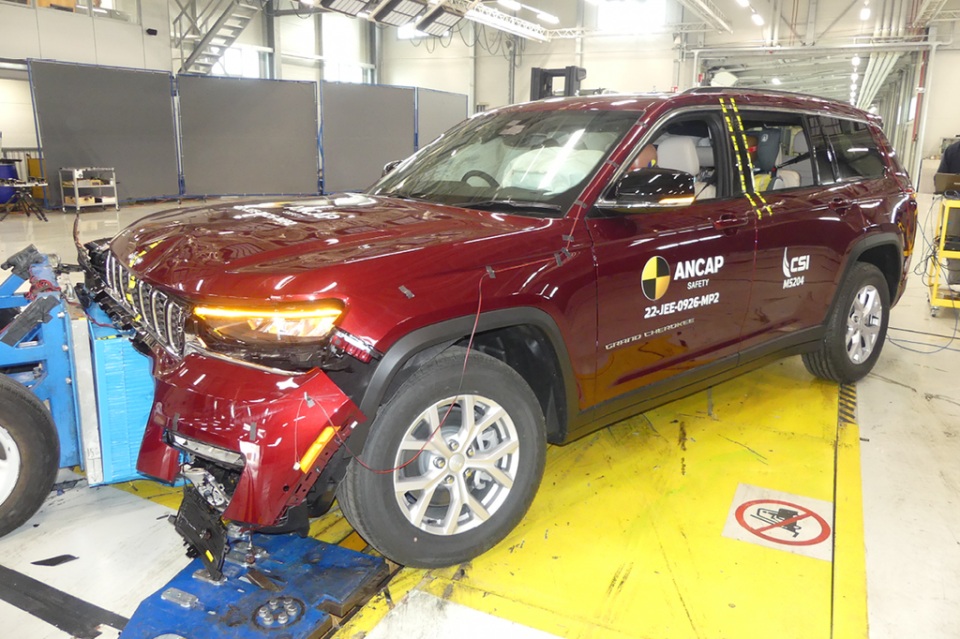
It scored 83 per cent for adult occupant protection, 93 per cent for child occupants, 81 per cent for vulnerable road users, and 84 per cent for safety assist features.
Standard safety features include:
Jeep provides a five-year warranty limited to 100,000km of mileage, and provides roadside assist so long as you service your vehicle at one of its official dealers.

The battery’s warranty is eight years or 160,000km. Services are capped at $399 a pop for the first four visits, at intervals of 12 months or 12,000km.
While charging costs vary, a home charge should cost between $5 and $8 using on-peak grid energy, or free if you can use a rooftop solar setup with either a home battery or daytime charging.
Ultimately, the Grand Cherokee 4xe asks you to pay a lot more money for not a lot of EV range, and real world efficiency falls short of that low claim.
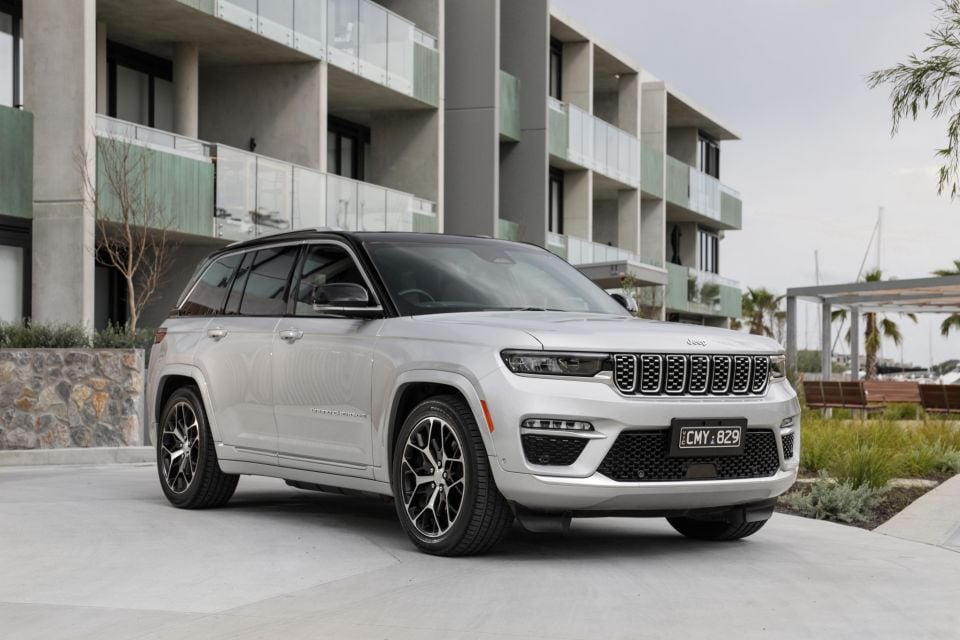
While the overall vehicle is impressive in terms of what it can do, it’s hard to escape the likelihood that a strong and refined modern diesel will haul a trailer and take you on adventures more effortlessly and probably more efficiently over long journeys.
None of this is to say the Grand Cherokee five-seater as a whole isn’t an imposing and capable option, but this writer isn’t convinced a middle-ground PHEV on balance justifies what the company is asking for it.
Click the images for the full gallery
BUY: Jeep Grand Cherokee MORE: Everything Jeep Grand Cherokee
Where expert car reviews meet expert car buying – CarExpert gives you trusted advice, personalised service and real savings on your next new car.


Damion Smy
2 Hours Ago


Damion Smy
3 Hours Ago


Matt Robinson
6 Hours Ago


Damion Smy
6 Hours Ago


Damion Smy
20 Hours Ago


Damion Smy
21 Hours Ago